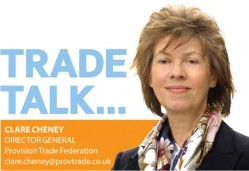Labelling, obesity and the Titanic's deckchairs

But, this time, some actors have changed sides. Where it was the responsibility of the Food Standards Agency, it is now the Department of Health's and although manufacturers' positions have remained roughly the same on this subject, it is the retailers who have changed from anti- to pro- a harmonised system for traffic light labels on front of packs.
This has caused some alarm among suppliers of brands that don't have colour coding because where retailers go, they feel compelled to follow.
Let me say before I go any further that there is a benefit in having traffic light labels on composite foods and ready meals where the information is not otherwise easy to gauge and compare. But it is not the same with many categories of food where nutritional differences between items are small.
Overweight people
Take chocolates: you can imagine overweight people searching the fixtures in vain for green lights while hoping for options with fewer calories in reasonable portion sizes. It may be a fruitless task but it might give them some exercise. All that stretching and bending and taking reading glasses on and off to read the labels! Supermarkets might as well have one huge red traffic light at each end of the aisles for categories where every item would qualify for one. And green ones by the fruit and veg aisles.
Redesigning thousands of labels
It would be a lot cheaper than redesigning thousands of labels that tell people what they already know: eating too many cakes, biscuits and sweets will make them fat. If the guideline daily amount prescribes one biscuit or square of chocolate as a portion, those who can stick to that are probably thin already. Or maybe green-lighted products could have special sections like the free-from aisle.
Over the past 20 years at least, as new food issues have arisen, somebody suggests new food labelling as the solution. Some may see it as a quick way to obtain some credit for having done something, even though, in their heart of hearts, they know that where obesity is concerned, that 'something' is probably no more effective than moving the deckchairs on the Titanic.
The fact that the government hasn't been able to come up with a better solution for tackling obesity and other food-related problems demonstrates the incompatibility between governmental power and common sense in the struggle to secure a quick 'win'.
















